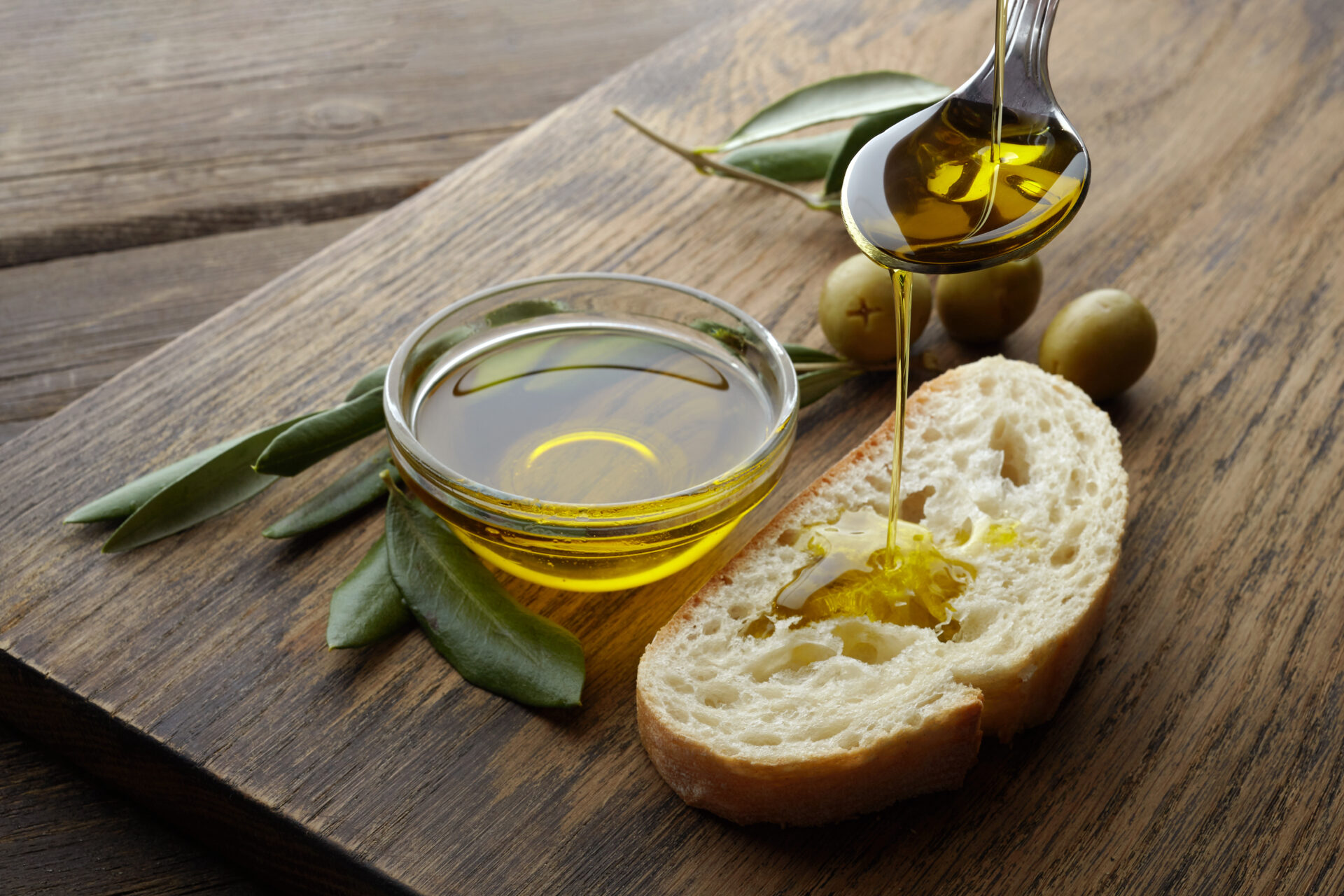Recently, we wrote an article titled “4 Healthy Cooking Oils in Today’s World of Choices.” In it, we discussed 4 types of cooking oil, what their benefits are, and how to use them. Today, we wanted to take a deep dive into one of those cooking oils: olive oil.
Olive Oil is one of the most well-known oils used around the world. It has been used by different civilizations for over 4,000 years and is still one of the most popular choices of cooking oil in today’s modern world. But why? What has made olive oil so popular for so long?
In this post, we’re going to examine how olive oil is made (hint: not much has changed over the years), what some of the benefits are, and how best to use it.
How Olive Oil is Made
While the tools used to produce olive oil have changed over the years, the basic process stays the same. The process for making olive oil is harvest, extraction, filter, and bottling.
Harvesting
Olives grow on trees just like apples. This means the olives need to be picked from the trees and put into containers. To accomplish this, harvesters use tools such as special rakes and tools (some mechanical, some by hand) to shake the olives out of the tree.
The olives fall on netting that has been lain under the tree and are collected together when the harvest is done. The olives are then placed in special containers or trucks to be brought to the processing center.
The harvesters try to accomplish this step as quickly as possible, because the longer the olive is off the tree before it is processed into oil, the lower quality oil product they will make.
Extraction
Once the olives have arrived at the processing center, they go through the “defoliator” to remove any leaves, sticks, or debris from the batch of olives. The olives are then washed thoroughly to remove any dirt and pesticides. After the olives are cleaned, they are ground up into a paste. Traditionally, this was done using millstones (heavy rocks that were rubbed together to grind items), but many olive producers today have switched to machines that crush and grind the olives using stainless steel hammers and knives.
Once the olives have become a paste, they are put into a machine that stirs the paste for 20-40 minutes, which helps the oil to start separating from the paste particles. After this time, the paste is placed in a decanter (a centrifuge) where the paste is split into oil and olive particles. This is done by spinning the container holding the paste very fast until the oil and olive particles have separated (this is similar to the way they get honey out of the honeycomb).
Once this has been completed, the paste is sometimes washed with water to extract any extra oil.
Filter
After all of this, the oil is then left to rest, allowing time for the oil to rise to the surface and any extra water or sediment to sink to the bottom of the container. This can be done multiple times to ensure the oil is clean.
If extra-virgin olive oil is being produced, this is where the filtration step stops, as the “virgin” label signals it is unrefined.
If it is light or pure olive oil being produced, the filtration system can continue by using heat and compounds to further clean the oil.
Bottling
Olive oil is bottled once all the processing steps are complete and the oil produced passes testing. These tests make sure the oil placed in the bottles consists of the chemical compounds required to qualify for extra-virgin, light, or pure olive oil standards.
What Are The Benefits of Olive Oil?
Part of olive oil’s longevity throughout human history stems from its amazing benefits. Some of the biggest benefits to olive oil are:
- Contains a high amount of antioxidants
- Considered a “healthy fat”
- Can protect against heart disease
- Supports brain and memory health
How to Use Olive Oil
As we stated in our oil overview article, extra-virgin olive oil and regular (or light) olive oil should be used for separate purposes.
Because of extra-virgin’s lower smoke point and higher cost, it’s best to be used for dressings, dips, drizzling, and marinades. You can use it for sautéing if you would like, but it can only reach around 375℉ before it starts to burn and break down.
Regular or light olive oil (remember, “light” refers to a lighter taste, not fewer calories) are best used for sautéing, frying, or grilling because it can reach 475℉ before starting to burn.
No matter the olive oil you choose to use, something most people don’t realize is olive oil only has a shelf life of around 18-24 months. That really expensive bottle of olive oil you got for your wedding 10 years ago that you only use on special occasions? It died a long time ago.
When olive oil “goes bad,” it does not magically become poison to you and your family. It will not make you sick from being “spoiled” like other food might. However, it does turn rancid; the flavor breaks down, and it no longer has the health benefits it once did.
The best advice if you’ve been gifted (or purchased) nice, expensive olive oil? Use it in things that will allow you to enjoy the flavor and texture, such as dipping really good bread or drizzling it over a salad.
What are your favorite ways to use olive oil? Do you use it for anything other than cooking? Let us know! We love to hear from you.
As always, we’ve included some recipes for you to experiment with on your olive oil journey.
Grilled Chicken Margherita Naan Pizza


